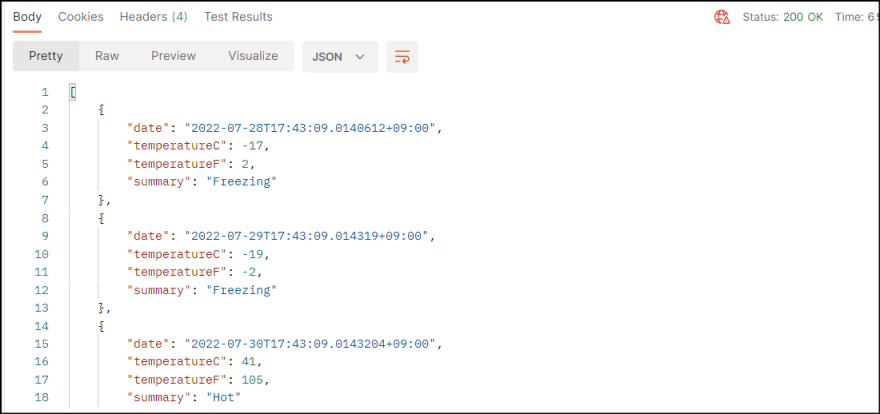An Interest In:
Web News this Week
- March 22, 2024
- March 21, 2024
- March 20, 2024
- March 19, 2024
- March 18, 2024
- March 17, 2024
- March 16, 2024
C: Modify Claims via Middleware in ASP.NET
Most Web applications use OAuth 2.0 to authenticate/authorize uses these days. ASP.NET also has built-in support for OAuth 2.0 with Azure AD which we use quite often.
However, in many projects, we found it difficult to include appropriate claims from the beginning because:
- Management team of AD is different
- There are strict policies that we cannot create test AD
- We don't know what scope to be created yet
In such care, we often neglect authorization settings in controller, but we shouldn't. To avoid this, I explain how to use middleware to modify passed claim so that we can tweak JWT.
Web API
In this article, I start from normal Web API using template.
dotnet new webapi -n modifyjwtcd modifyjwtstart .\modifyjwt.csprojEnable Authentication
Refer to Quickstart: Protect a web API with the Microsoft identity platform to enable authentication against your Azure AD.
Add require scope to existing controller
By default, there are not authorization settings in existing controller.
1. Install Microsoft.Identity.Web nuget package.
2. Add [RequiredScope] attribute to WeatherForecastController.cs. I added ReadWeatherForecast as required scope.
[HttpGet(Name = "GetWeatherForecast")][RequiredScope("ReadWeatherForecast")]public IEnumerable<WeatherForecast> Get(){ return Enumerable.Range(1, 5).Select(index => new WeatherForecast { Date = DateTime.Now.AddDays(index), TemperatureC = Random.Shared.Next(-20, 55), Summary = Summaries[Random.Shared.Next(Summaries.Length)] }) .ToArray();}3. Run the application and confirm you cannot access the controller.
Add middleware to modify JWT
1. Add middleware class.
using System.Security.Claims;namespace modifyjwt;public class MyAuthMiddleware{ private const string SCOPE_CLAIM_TYPE = "http://schemas.microsoft.com/identity/claims/scope"; private readonly RequestDelegate _next; public MyAuthMiddleware(RequestDelegate next) { _next = next; } public async Task InvokeAsync(HttpContext context) { if (context.User.Identity is not null && context.User.Identity.IsAuthenticated) { Claim scope = context.User.Claims.First(x => x.Type == SCOPE_CLAIM_TYPE); (context.User.Identity as ClaimsIdentity)?.RemoveClaim(scope); context.User.AddIdentity(new ClaimsIdentity(new List<Claim>() { new Claim(SCOPE_CLAIM_TYPE, "ReadWeatherForecast"), })); } // Call the next delegate/middleware in the pipeline. await _next(context); }}public static class MyAuthMiddlewareExtensions{ public static IApplicationBuilder UseMyAuthMiddleware(this IApplicationBuilder builder) { return builder.UseMiddleware<MyAuthMiddleware>(); }}2. Use it in Program.cs between UseAuthentication and UseAuthorization
app.UseAuthentication();app.UseMyAuthMiddleware();app.UseAuthorization();3. Run the app to confirm it works.
Add multiple scopes
If we need to add multiple scopes, we can add it by separate each scope with space like ReadWeatherForecast WriteWeatherForecast.
Summary
In production, we should get all necessary scopes from Azure AD, or at least fetch from data source by using user id.
Original Link: https://dev.to/kenakamu/c-modify-claims-via-middleware-in-aspnet-335m
Dev To
 An online community for sharing and discovering great ideas, having debates, and making friends
An online community for sharing and discovering great ideas, having debates, and making friendsMore About this Source Visit Dev To


